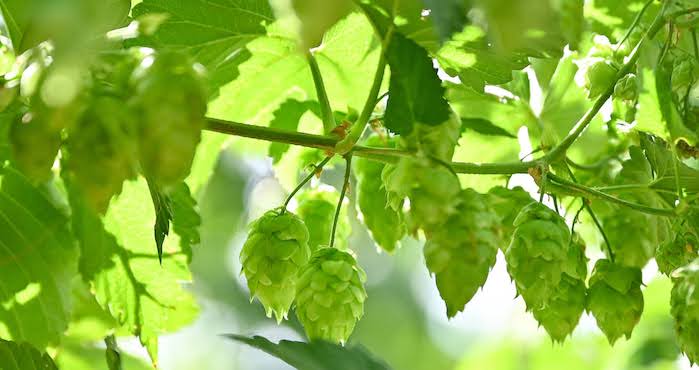Hop Science Newsletter (March 2015)
In this issue: an analysis on 15 hop varieties, elegant dry hopping, and raspberry wines.

MY PLEASURE TO MEASURE…
A few more insights into understanding hop aroma were gained by these Belgian researchers who took 15(!) different hop varieties and carried out a set of comprehensive analyses. Not only were the hops analysed, they were also used to produced different types of single hop variety beers with early hopping, late hopping and dry hopping. The hop varieties chosen were Cascade, Centennial, Citra, Challenger, Cluster, Columbus, Galena, Magnum, Nugget, Palisade, Saaz, Simcoe, Sorachi Ace, Tettnanger and Warrior. The components measured were alcohols, saturated esters, unsaturated esters, monoterpene hydrocarbons, monoterpene alcohols, sesquiterpene hydrocarbons and oxygenated sesquiterpenes. Within these groups of compounds varietal differences were obvious. The total concentration of esters before fermentation is variety dependent, but fermentation changes the picture. Transfer rates were calculated for linalool and geraniol, and in the case of gerianol, it was discovered that it is formed from other compounds during the course of brewing. Missing are the tasting results that could connect the analysis results with sensory impressions, but perhaps there is more to follow…¹
THE ELEGANT WAY OF DRY HOPPING
Dry hopping is fun but also, you have to admit, a bit messy. These German researchers were looking for a way to dry hop without actually dry hopping. They established a process that works with sequenced desorption and absorption to transfer hop volatiles into beer. Hop volatile desorption from a hop-water mixture is forced by a stripping gas followed with a transfer in the gas stream to an absorption medium. The system, operating in a closed loop, was tested with both water and beer. This novel method features an easy to implement and cost-effective method for transferring hop aroma compounds into beer without directly bringing the beer in contact with hop solids that, for example, may introduce filtration and clarification problems. With a transfer rate for linalool of 65% within 24 hours, why not give it a try?²
HOPS-RASPBERRY…WHERE IS THE DIFFERENCE?
To solve the mystery of hop aroma it is helpful to look into research with other fermented beverages. These Korean researchers investigated the aroma profile of raspberry wines fermented with different yeast strains. They were able to identify aroma components as sensorily important, as we know well from the hops, e.g. linalool, citronellol, terpineol and different esters. Not surprisingly they found that the choice of yeast strain has a big flavor impact on the resulting wine! So in case you run out of hops – take some raspberries for compensation!³
HOP VARIETY OF THE MONTH: RELAX
Relax is a hop variety which was bred for its usage in tea! Relax basically has no alpha acids (0,25%), a high beta acid content (13%) and a high oil content (1,15%). Quite unique are the flavor qualities of Relax. While this variety has herbal and floral aroma notes, beers with this variety develop flavour of dried fruits, warming baroque and cognac aromas plus refreshing citrus characters. More info here.
